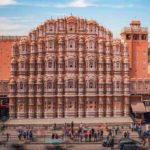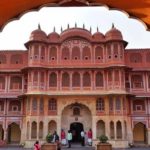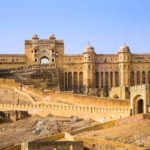10 Top Rated Attractions in Jaipur, the capital city of Rajasthan in India, is a vibrant destination renowned for its rich history, majestic palaces, colorful culture, and architectural marvels. Fondly known as the “Pink City” due to the predominant color of its buildings, Jaipur offers a plethora of attractions that captivate visitors from around the world.
The iconic Hawa Mahal, or the “Palace of Winds,” is one of Jaipur’s most recognizable landmarks. This ornate five-story palace, constructed of red and pink sandstone, features intricately designed windows and latticework, allowing royal women to observe street festivities, Jaipur Attractions.
The magnificent Amer Fort, a UNESCO World Heritage Site, stands atop a hill overlooking the city. This majestic fort showcases a blend of Rajput and Mughal architectural styles and offers breathtaking views of Maota Lake.
City Palace, the residence of the royal family, is a grand complex featuring courtyards, gardens, and museums exhibiting artifacts and historical belongings of the erstwhile rulers. The Jantar Mantar, an astronomical observatory built by Maharaja Jai Singh II, showcases a collection of architectural astronomical instruments.
Jaipur Tourism is also famous for its bustling bazaars. The Johari Bazaar for jewelry, Bapu Bazaar for textiles, and the vibrant local markets offer an array of handicrafts, textiles, gemstones, and traditional Rajasthani attire, making it a paradise for shoppers.
Additionally, visitors can explore the Nahargarh Fort, enjoy an elephant ride at Amer Fort, savor authentic Rajasthani cuisine, and witness captivating folk performances showcasing the region’s vibrant culture.
The charm of Jaipur lies not only in its historical monuments but also in the warmth of its people, its culinary delights, and the colorful tapestry of traditions that continue to thrive, making it an enchanting destination for travelers seeking a glimpse of India’s royal heritage and cultural richness.
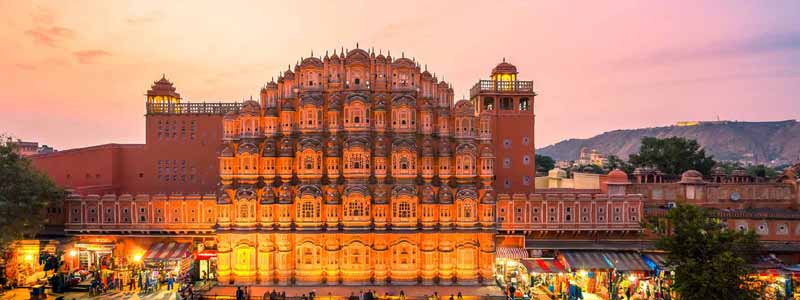
Hawa Mahal (Palace of Winds)
The Hawa Mahal, translating to the “Palace of Winds,” stands as an architectural marvel in the heart of Jaipur, India. Constructed in 1799 by Maharaja Sawai Pratap Singh, this stunning red and pink sandstone structure represents a fusion of Rajputana and Mughal architectural styles, Jaipur Tour Packages.
Rising five stories tall, the façade of Hawa Mahal is adorned with intricately designed latticework windows, around 953 in total, which were crafted to allow the circulation of air and provide ventilation for the palace, giving it the epithet “Palace of Winds.” These ornate windows also served the purpose of allowing the royal women to observe street festivals and daily life while remaining veiled from public view.
The structure’s unique pyramidal shape, resembling Lord Krishna’s crown, further adds to its allure. Its architectural grandeur and historical significance make it an iconic symbol of Jaipur’s rich cultural heritage Jaipur Tourism.
Visitors are captivated by the symmetrical beauty and the panoramic view of the city offered from the Hawa Mahal. Its delicate honeycomb-like structure and the elaborate detailing on the windows and façade continue to attract tourists, historians, and architecture enthusiasts from around the globe, offering a glimpse into Rajasthan’s royal past and architectural finesse.
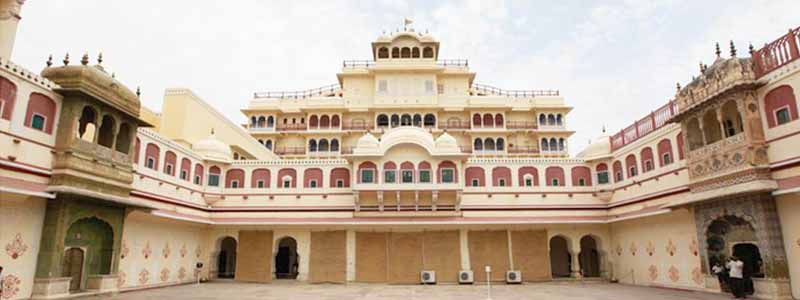
City Palace
The City Palace in Jaipur, Rajasthan, stands as an exquisite testament to the opulence and grandeur of India’s royal heritage. Constructed in the early 18th century by Maharaja Sawai Jai Singh II, the palace remains a symbol of architectural brilliance and historical significance.
Spread across a vast area, the City Palace complex amalgamates Rajput, Mughal, and European architectural styles, showcasing a stunning blend of artistry and craftsmanship. Its sprawling courtyards, gardens, intricate gateways, and ornate structures mesmerize visitors with their intricate detailing and vibrant hues.
The palace houses several structures like Chandra Mahal, Mubarak Mahal, Diwan-i-Khas, Diwan-i-Aam, and the Maharani Palace, each reflecting distinctive purposes and displaying remarkable artistry through their design and decor. The Chandra Mahal, a seven-story structure, serves as the residence of the royal family and also features a museum exhibiting an impressive collection of artifacts, textiles, and weaponry.
Moreover, the palace offers panoramic views of Jaipur city from its terraces and balconies, providing a glimpse into the city’s historical and cultural landscape.
As a cultural gem and architectural marvel, the City Palace in Jaipur remains a captivating destination, drawing countless visitors to immerse themselves in the rich heritage and royal legacy of Rajasthan.
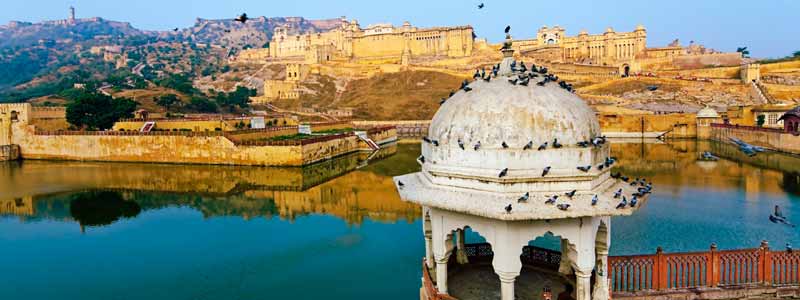
Amber Fort
Amber Fort, located in Jaipur, India, is an architectural marvel that stands as a testament to the grandeur of Rajasthan’s history. Built in the 16th century by Raja Man Singh I, this majestic fort is a fusion of Rajput and Mughal architectural styles, showcasing stunning red sandstone and marble structures.
The fort is perched atop a hill overlooking Maota Lake, creating a picturesque sight that captivates visitors. As one enters through the Sun Gate (Suraj Pol), a sense of awe takes over, witnessing the intricate designs, beautiful courtyards, and ornate palaces within its walls.
The Diwan-i-Aam (Hall of Public Audience), adorned with pillars and lattice windows, and the Sheesh Mahal (Hall of Mirrors), embellished with countless mirrors that reflect light, are among the fort’s most striking features. The Ganesh Pol, an intricately decorated gateway, leads to the private quarters of the royal family.
The fort’s strategic location provided both protection and aesthetic beauty, allowing a panoramic view of the surrounding landscape. Visitors can also enjoy an elephant ride up to the fort, adding a touch of royal experience.
Amber Fort’s historical significance, coupled with its architectural brilliance, makes it a must-visit destination for anyone exploring the rich heritage of Rajasthan, offering a glimpse into India’s royal past.
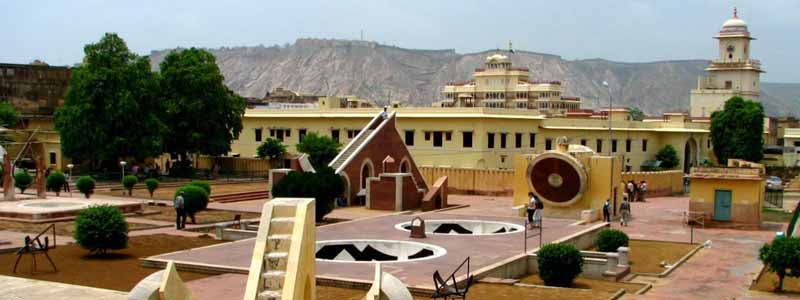
Jantar Mantar
Jantar Mantar in Jaipur, Rajasthan, stands as a testament to the astronomical advancements of ancient India. Built by Maharaja Sawai Jai Singh II in the early 18th century, this UNESCO World Heritage Site is a collection of architectural astronomical instruments.
The term “Jantar Mantar” roughly translates to “instruments for measuring the harmony of the heavens,” and it served as a center for studying time, space, and celestial bodies’ movements. The site houses 19 instruments, each meticulously designed to observe celestial phenomena like tracking stars, predicting eclipses, and determining time with incredible precision.
The instruments, crafted mainly from stone and marble, showcase a blend of Indian, Islamic, and Western astronomy principles. The most striking among them is the enormous sundial, known as the Samrat Yantra, standing at 27 meters tall. This sundial can accurately calculate local time to within a few seconds.
Visitors to Jantar Mantar experience an immersive journey into India’s scientific past. The intricate geometric structures and the scientific prowess showcased in these instruments are a testament to India’s rich heritage in astronomy and mathematics. Even in the modern era, Jantar Mantar remains a symbol of India’s remarkable contribution to the field of astronomy and continues to attract tourists and researchers from around the world.
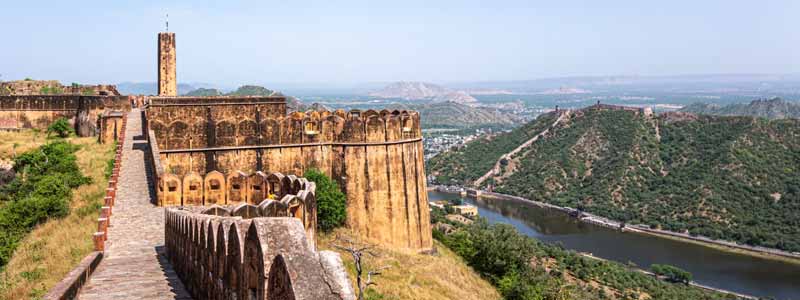
Jaigarh Fort
Jaigarh Fort, situated on the Aravalli Hills overlooking Jaipur in Rajasthan, India, stands as a magnificent testament to the region’s rich history and architectural brilliance. Built in the 18th century by Maharaja Jai Singh II, this imposing fortress served as a military stronghold and treasury for the Kachwaha rulers of Jaipur.
The fort is renowned for its impressive architecture, especially its well-preserved cannon foundry, which housed one of the world’s largest cannons, Jaivana, known for its colossal size and historical significance. The fortifications include thick walls, watchtowers, and ramparts, providing a breathtaking panoramic view of the surrounding landscape.
One of the intriguing aspects of Jaigarh Fort is its connection to the nearby Amber Fort through fortified passages, offering a glimpse into the strategic planning of that era.
Inside the fort, visitors can explore various sections like the armory, palaces, gardens, and a museum showcasing ancient artifacts, weapons, and armor. The intricate water supply system, including enormous water tanks, reflects the ingenious engineering of the time.
Jaigarh Fort’s historical significance, architectural grandeur, and panoramic vistas make it a must-visit destination for history enthusiasts, architecture lovers, and anyone seeking a glimpse into Rajasthan’s regal past.
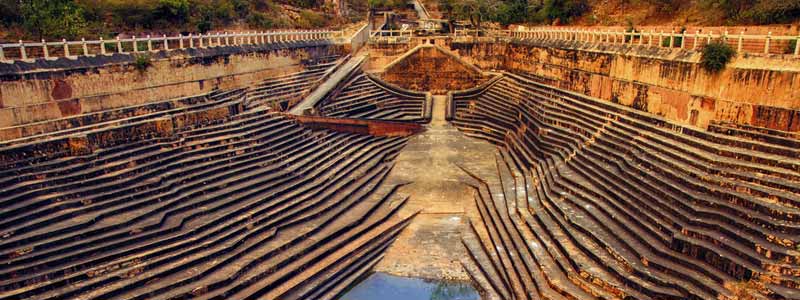
Nahargarh Fort
Nahargarh Fort, perched on the rugged Aravalli Hills overlooking the pink city of Jaipur in Rajasthan, India, stands as a testament to the region’s rich history and architectural splendor. Built in 1734 by Maharaja Sawai Jai Singh II, this imposing structure was initially constructed as a defense fortification to protect Jaipur.
The fort’s name, Nahargarh, translates to “abode of tigers,” attributed to the belief that it was haunted by the spirit of Nahar Singh Bhomia, a Rathore prince whose spirit disrupted the fort’s construction until appeased by a temple dedicated to him within the premises.
Aside from its intriguing folklore, Nahargarh Fort offers breathtaking panoramic views of Jaipur cityscape, especially during sunset, making it a favorite spot for tourists and locals alike. The architectural brilliance of the fort, characterized by delicate carvings, intricate frescoes, and sprawling courtyards, reflects the amalgamation of Rajputana and Mughal styles.
Visitors can explore the various sections of the fort, including the Madhavendra Bhawan, a series of suites built for the king’s wives, adorned with beautiful murals and latticed windows offering picturesque vistas.
Today, Nahargarh Fort serves as a cultural heritage site and a popular tourist attraction, inviting visitors to immerse themselves in history, soak in breathtaking views, and appreciate the architectural grandeur of Rajasthan’s past.
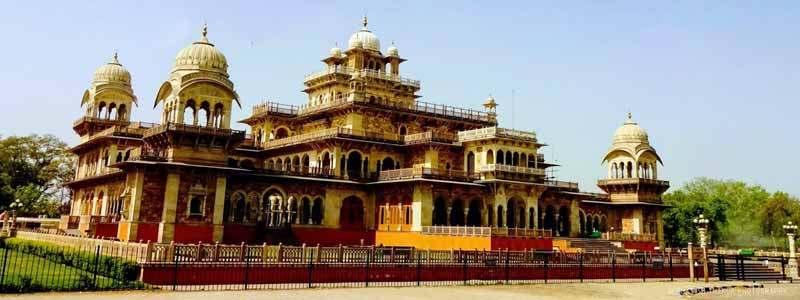
Albert Hall Museum
The Albert Hall Museum, located in Jaipur, Rajasthan, is a magnificent architectural gem that stands as a testament to the city’s rich cultural heritage. Constructed in 1876, this museum is a fine example of Indo-Saracenic architecture, blending elements of Indian, Mughal, and European styles.
Commissioned by Maharaja Sawai Ram Singh II, the museum was initially designed to be a concert hall. However, it was later converted into a museum to showcase a diverse collection of art, artifacts, and exhibits representing Rajasthan’s history, culture, and craftsmanship.
The museum’s striking facade features domes, towers, and intricate stone carvings, drawing visitors into its splendid interiors. Inside, the galleries house an extensive array of items including sculptures, paintings, textiles, arms and armor, pottery, and more. Notable exhibits include an impressive Egyptian mummy, ancient coins, traditional Rajasthani attire, and intriguing artifacts depicting local lifestyles and traditions.
The beautifully landscaped gardens surrounding the museum offer a tranquil retreat and a perfect spot for relaxation amid Jaipur’s bustling cityscape.
Albert Hall Museum stands as a cultural repository, preserving the essence of Rajasthan’s vibrant past and offering visitors a captivating journey through history, art, and heritage. Its architectural grandeur and diverse collections make it a must-visit attraction for anyone exploring Jaipur’s rich cultural tapestry.
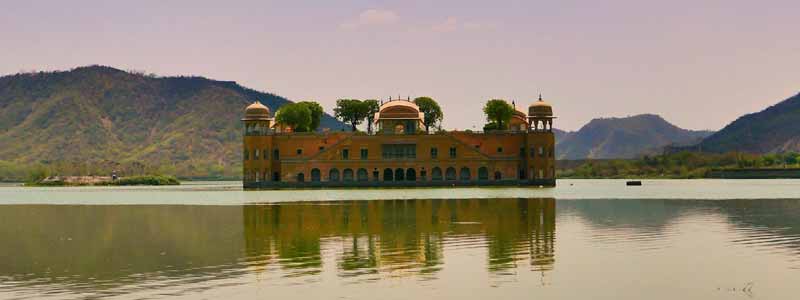
Jal Mahal
The Jal Mahal, or Water Palace, is an exquisite architectural gem situated in Jaipur, Rajasthan, India. This majestic palace stands amidst the waters of the Man Sagar Lake, creating an enchanting sight that captivates visitors with its beauty.
Constructed in the 18th century by Maharaja Jai Singh II, the Jal Mahal is a blend of Rajput and Mughal architectural styles. The palace, primarily made of red sandstone, features five stories, with four submerged beneath the lake’s surface when the reservoir is full. Only the top floor remains visible, adorned with intricate details, balconies, and ornate Rajput-style architecture.
The strategic location of the Jal Mahal provides a serene and picturesque view, with the Aravalli hills forming a stunning backdrop. The palace’s design incorporates intricate geometric patterns, intricate carvings, and vibrant hues, showcasing the architectural prowess of its time.
While the Jal Mahal is not open to the public for interior exploration, visitors can appreciate its beauty from the banks of the Man Sagar Lake. The palace, especially during sunrise or sunset, offers a mesmerizing sight as it reflects on the shimmering waters, making it a photographer’s delight and a must-visit destination for those exploring Jaipur’s rich cultural heritage.
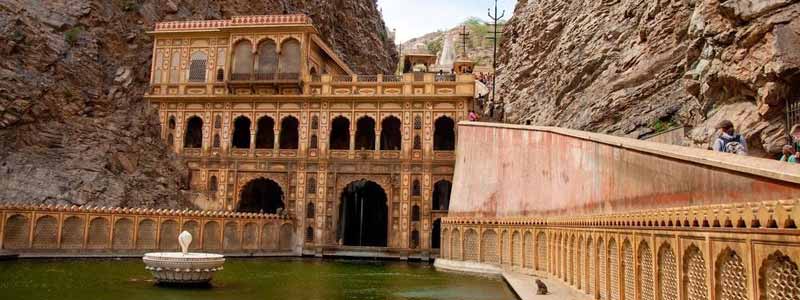
Galtaji (Monkey Temple)
Galtaji, also known as the Monkey Temple, is a renowned Hindu pilgrimage site located amidst the serene Aravalli Hills in Jaipur, Rajasthan, India. Spanning a sprawling complex, this sacred place is revered for its numerous temples, natural water springs, and the playful troop of monkeys that freely roam the area, hence its colloquial name.
The temple complex comprises several beautifully carved temples, the most prominent being the main Galtaji Temple dedicated to Lord Hanuman, the monkey god, along with other shrines dedicated to various Hindu deities. The architecture is a blend of stunning ancient designs adorned with intricate carvings and vibrant paintings, reflecting the rich heritage of the region.
One of the major attractions of Galtaji is the natural freshwater tanks, known as “kunds,” fed by perennial springs. The most famous among these is the Galta Kund, which is believed to be sacred and is frequented by pilgrims who come to take a holy dip, seeking spiritual purification.
Visiting Galtaji offers not only religious significance but also a chance to admire its scenic beauty, witness religious rituals, and observe the playful antics of the resident monkeys. The tranquil ambiance amidst the rocky terrain makes it a must-visit destination for tourists seeking spirituality, history, and natural splendor in Jaipur.
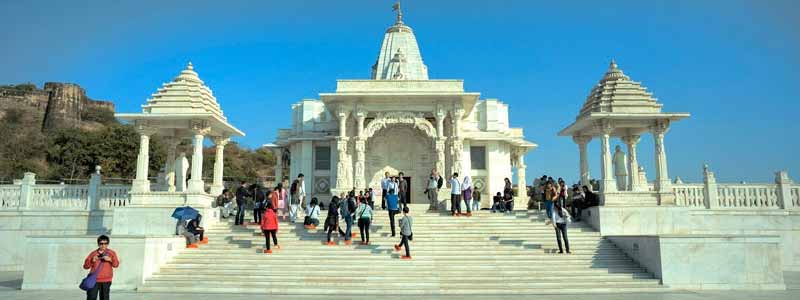
Birla Mandir (Laxmi Narayan Temple)
Birla Mandir, also known as the Laxmi Narayan Temple, stands as a prominent Hindu place of worship in Jaipur, Rajasthan. This architectural marvel was built by the Birla family, renowned for their contributions to various temples across India.
Constructed with pristine white marble, this temple showcases a seamless blend of traditional design elements and modern architectural techniques. The temple complex not only honors Lord Vishnu (Narayan) and his consort, Goddess Laxmi, but also houses idols of other Hindu deities.
The exquisite carvings and intricate artwork adorning the temple walls narrate mythological stories and scriptures. Visitors are captivated by the intricate detailing that reflects the craftsmanship of skilled artisans.
Surrounded by lush green gardens, the temple provides a serene and tranquil atmosphere for spiritual contemplation and meditation. Its serene ambiance, coupled with the melodious chanting of prayers, creates a spiritually enriching experience for devotees and tourists alike.
Apart from its religious significance, Birla Mandir is admired for its panoramic views of Jaipur, especially when illuminated against the night sky, presenting a breathtaking sight 10 Top Rated Attractions in Jaipur.
This architectural gem serves as a testament to Jaipur’s cultural richness and religious diversity, attracting devotees, tourists, and art enthusiasts from around the world.



